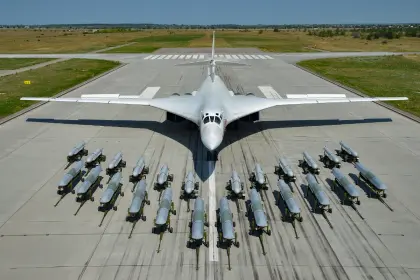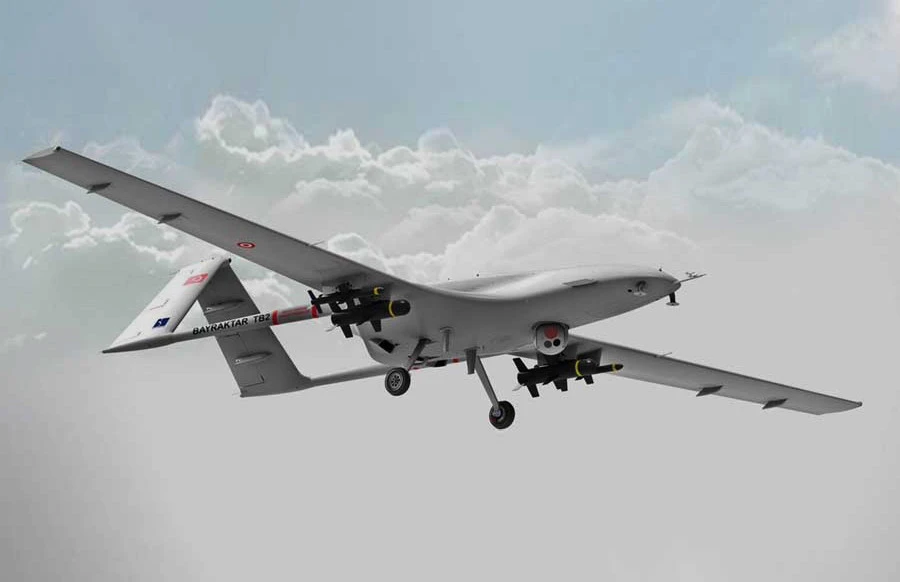Russia has upgraded what many consider to be its best cruise missile by almost doubling the size of its warhead to improve its effectiveness against buildings. This according to information by Ukraine’s military media on Thursday, May 9 following examination of recovered missiles debris.
The Kh-101 cruise missile (NATO: AS-23 Kodiak) is considered to be the Russian Federation's premier long-range strike weapon, which can be fitted with either a conventional or nuclear warhead. The 6 meter-long missile flies at tree-top height at a speed of 700-900 kph, designed to evade air defenses using programmable flight paths over ranges up to 3,000 km. The missile has been widely used by Moscow's forces in Ukraine and Syria along with the Soviet-era Kh-55 missile.
Military information platforms first reported the use of an upgraded Kh-101 missile with a more powerful warhead in April. Official Ukrainian sources reported the use of the new version of the Kh-101 among 17 Kh-series missiles that attacked civilian infrastructure on May 8.
Ukraine’s Defense Express (DE) reported that debris from a downed Kh-101 had been recovered from a farmer’s field presenting military researchers the first opportunity to examine the latest upgrades of the missile.

Russian Orthodox Church Offers Military Training for Kids
Screenshot from X / Twitter of Russian Kh-101 cruise missile shot down in Ukraine on May 8
DE reported that modifications to the Kh-101 included a new, tandem warhead that added a 350 kg secondary explosive payload to the standard 450 kg. warhead, more than doubling its destructive capacity. Neither warhead detonated after the missile was shot down, the report said.
The increase to payload was achieved by reducing the size of the fuel tank which examination of the debris indicated may have more than halved its operational range from approximately 5,500 kilometers down to 2,250 kilometers.
According to other open-source reports, the upgrades may include flare launchers to decoy heat-seeking weapons attacking the missile, hardened electronics to resist jamming, more sophisticated optics on a modernized gimble and better streamlining, although recent media images and reports did not shed light on these possible enhancements.
DE published an image of a serial number on the recovered missile which indicated it had been manufactured in the second quarter of 2024 and had probably been deployed almost straight from the factory. Kyiv Post confirmed serial number came from a Kh-101 missile, but it was unable to confirm other details.
Serial number of Kh-101 missile shot down over Ukraine on May 8. Photo: X / Twitter
In a daily situation update the UK Defence Ministry also confirmed the details of the upgrades to the Kh-101 cruise missile used in Ukraine including its more powerful warhead:
“The latest modification has likely reduced the range of the AS-23 (Kh-101) by half. The LRA [Russian Air Force Long Range Aviation] does not need the [longer] range to hit all of Ukraine. The second warhead is designed for increased fragmentation at the target. It is likely that this will make the system more effective in striking non-hardened targets,” the statement said.
The Bulgarianmilitary.com, security information website said that the Kh-101's warhead is “alarmingly” filled with metal cubes typical of anti-aircraft missiles used to attack “soft skinned” aerial targets, but rarely used in missiles deigned to strike protected infrastructure or “hard targets such as actual weapons.“The recent introduction of dual warheads in the Kh-101 attests to Russia's relentless adaptation of its arsenal to meet the demands of modern combat,” its May 8 article said.
The Russian mil-blogger Voin DV said the dual warhead would be particularly effective in the Kremlin's current campaign targeting Ukraine’s energy and heating infrastructure, as well as against airfields that will operate US-made F-16 fighter aircraft widely expected to be arrive in Ukraine in May or June.
“The new two-module warhead with an 800 kg high-explosive warhead will make it possible to multiply the impact, especially in those cases when we are talking about objects of energy or industry of Ukraine... similar effects will be observed by strikes on aircraft shelters at all known enemy [Ukrainian] airfields. Much more critical damage will be inflicted on large railway junctions, bridges, as well as external junctions of bunkers, where the Armed Forces of Ukraine in the future plan to deploy F-16AM fighters received from the West,” the pro-Kremlin site said on May 10.The post went on to say that Kh-101 strikes would also be effective against western arms deliveries to Ukraine, particularly against the Beskidy Tunnel in western Ukraine's Carpathian Mountain region, using either a conventional or a thermonuclear warhead.
You can also highlight the text and press Ctrl + Enter








